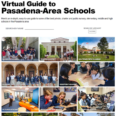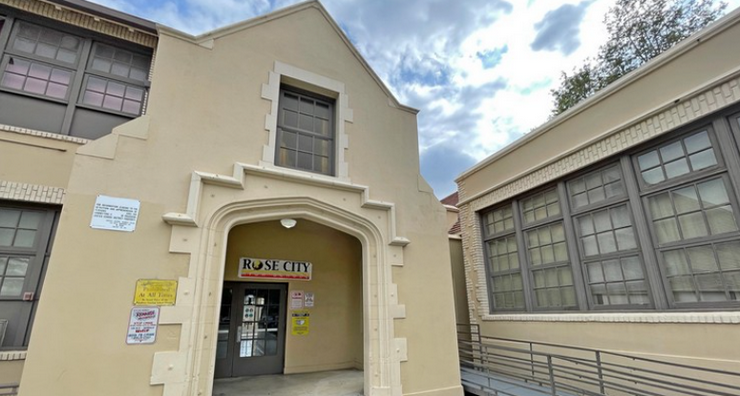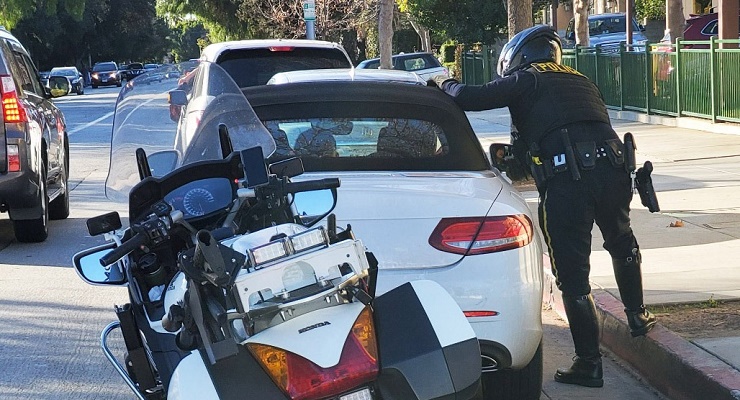Moving traffic and people in Pasadena has officially entered a new era.
As Councilmember Tyron Hampton told his colleagues Monday evening, following the presentation of a draft version of the City’s new Street Design Guide, “‘Complete Streets’ is not just about moving cars anymore, it’s about moving everyone.”
Former Design Commission member Blair Miller agreed, calling the plan “innovative and forward-looking,” and a “largely successful plan that is more about comfort and safety than just about the unimpeded flow of cars.”
Mayor Terry Tornek called the new plan “somewhat revolutionary in the way it thinks about streets and what they’re supposed to do,” but also cautioned about the necessity of finding the funding to realize all that the plan has to offer.
The City’s Transportation Advisory Commission, after reviewing and discussing the proposed Guide at two workshop community meetings January 26, 2017, and February 9, 2017, unanimously supported staff’s recommendation for adoption of the Guide by the City Council.
According to the guide, which was presented by Transportation Director Fred Dock and Paul Moore, principal at Nelson Nygaard, as part of the “Mobility Element” of the City’s General Plan, the Guide includes new goals and objectives to address complete streets, such as, “Streets should reflect neighborhood character and accommodate all users such as pedestrians, bicyclists, public transit, skateboarders and scooters, and “Streets should reflect individual neighborhood character and needs, and support healthy activities such as walking and bicycling.”
The ten-chapter guide covers a wide range of traffic and transportation issues, ranging from such details as vehicle travel lane width and landscaping elements to more “big picture” subjects as “Guidance for Implementing Optimal Transit Facilities.”
As Moore explained, the Street Design Guide is the implementation mechanism of the City of Pasadena’s Complete Streets policy. According to the guide’s introduction, “Standards and ordinances associated with the design of streets are housed within existing municipal code and different City departments such as Transportation, Public Works, and Planning.
“In addition,” the plan continued, “some of the City’s common practices in the design of streets are not documented anywhere. This manual has gathered and reconciled existing policies and best practices to create a set of guidelines in support of the Mobility Element.”
According to the guide itself, the plan “builds on national research, National and State engineering standards, and best practices.
“Recently,” according to the Guide, “the National Association of City Transportation Officials (NACTO) released the Urban Street Design Guide and the Urban Bikeways Design Guide which provides an overview of the ways in which major cities are using street design to make their communities safe and inviting for people to get around in an urban context. The California
Department of Transportation (Caltrans) endorsed the NACTO design guides in 2014 and to the maximum extent possible; the principles and approach of these documents are reflected in the Pasadena guidelines, said the guide.
The Street Guide also incorporates national standards, such as the Geometric Design of Highways and Streets published by the American Association of State Highway and Transportation Officials (AASHTO), and the California Manual for Uniform Traffic Control Devices (MUTCD) to provide support and precedent for the processes and design elements.
“While these precedent documents help to ground the recommended practices, the topics included in the Pasadena guidelines are tailored to the unique needs and existing conditions in the City of Pasadena,” The Guide also emphasized.
The new plan also manifests what is known as a “form-based framework.”
As Moore explained in his presentation, the form-based approach “simply involves designing the form of the street to meet the use and character you intend for it.”
The Guide itself explained, “That is not always how streets are designed. More often, the design is driven by national standards – unrelated to the local context – and by counts of cars that happen to be using that street at a given time. The form-based approach is more intentional and holistic.”
“This holistic approach to street design,” he continued, “takes into account the differing conditions and contexts of each street in Pasadena. Streets with different surrounding land uses, constraints, and significance for modes of transportation each require design considerations and treatments unique to those circumstances. The plans and aspirations of the community for the character of the street and adjacent land will also be factored in.”
According to the Transportation Department staff report, The Street Design Guide, once adopted by the City Council, will guide future development projects and will be incorporated into all Specific Plan updates.














 0 comments
0 comments


